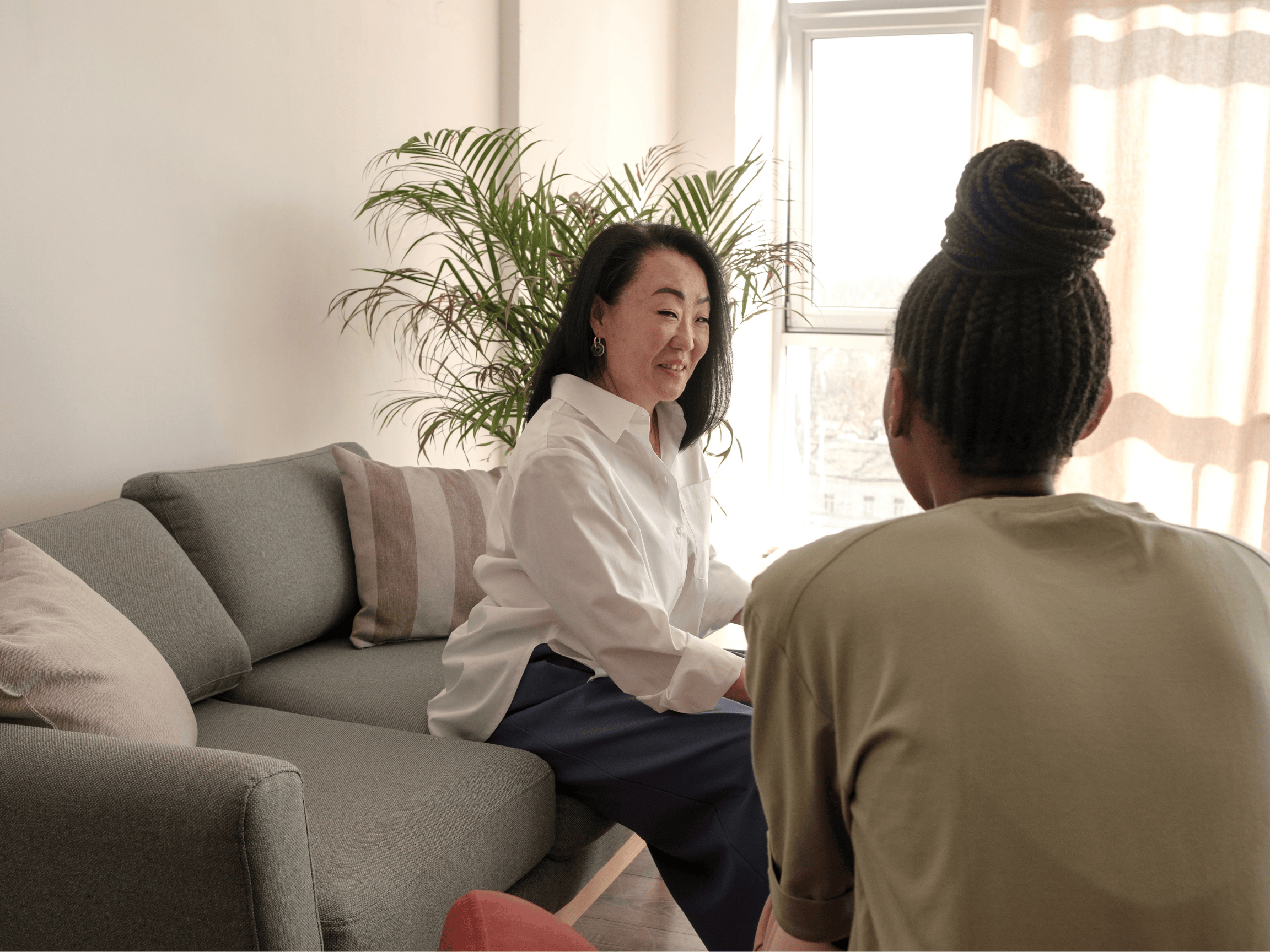We live in a world saturated with self-help tips, motivational reels, and mental health hacks. “Feeling anxious? Try this breathing trick.” “Can’t sleep? Here’s a sleep hygiene hack.” These are everywhere—and for good reason: they help, momentarily. They soothe, distract, and give glimpses of relief.
But here’s the truth:
Those small reliefs often fail when life gets messy. The problem isn’t always how we respond but often it's the emotional roof that has ‘holes’ we didn’t even know were there.
Therapy offers something no one-minute video or “one size fits all” advice can: a way in, into your own psyche, that’s tailored to you.
Below is an exploration for why that matters, with examples, research, and what you actually get when you commit to the work.
1. The Power of Being Truly Seen
When someone only gives you generalized advice, they don’t know your story. They don’t see the pattern, the parts you don’t share, the subtle emotional triggers that run under your skin.
- Example: You watch a video: “Feeling anxious? Do these breathing exercises.” You try, it helps a little. But then you hear criticism from your partner, or you get a tough email, and your chest tightens again. Because the root trigger—perhaps past experiences of being ignored, shame, or betrayal—wasn’t addressed.
- Research: Research consistently shows that the therapeutic alliance—the quality of the relationship between client and therapist—is one of the strongest predictors of positive outcomes in therapy (Prusiński, 2022). Meta-analytic reviews (over multiple studies) show that irrespective of modality (CBT, psychodynamic, etc.), a strong alliance produces more change (Martin et al., 2000).
2. Personalized Approach & Modality Matching
Not all therapy approaches are equal in how they work, and more importantly, not all are equally effective for you. What works for someone else (your friend, influencer, online guru) might not map well onto your history, your biology, your environment.
- Example: Two people experiencing PTSD: one might respond well to EMDR (Eye Movement Desensitization & Reprocessing), while another to trauma-focused CBT. The difference might depend on how their nervous system processes trauma, how safe they feel in therapy, or whether they prefer a more top-down (cognitive) or bottom-up (body/emotion) approach.
- Research: A meta-analysis found that both EMDR and trauma-focused CBT produce large, significant effects in reducing trauma symptoms in adolescents Hoogsteder et al., 2022). Also, EMDR has shown effectiveness even in adults with major depressive disorder (MDD) in reducing depressive symptoms, sometimes outperforming CBT in certain studies (Yan et al., 2021).
Therapy lets you try, adjust and explore what fits—skills, pace, style—rather than force a generic “hack.”
3. Beyond Band-Aid Solutions: Addressing Root Causes
Social media tips often provide only temporary relief—breathing exercises during panic, redirecting thoughts, or journaling—and, at times, they allude to the underlying contextual factors from which the psychological difficulty may originate, like experiences of childhood trauma. These are valid and helpful. But when emotional pain arises from layered histories, attachment disruptions, or unresolved trauma, symptom fixes often leave you feeling vulnerable.
- Example: Maybe you feel overlooked in your relationship. You practice healthy and direct communication (great!), but you still feel hurt every time your partner doesn’t reach out. Why? Possibly because part of you fears abandonment, or because you carry messages from childhood that you must always prove your value. Those dynamics don’t fully change with tips alone.
- Research: Trauma-focused therapies (EMDR, TF-CBT) don’t just reduce symptoms; they change diagnostic status. In one RCT, EMDR led to significant reductions in PTSD symptoms, with over 65% of participants losing their PTSD status after treatment (Hafkemeijer et al., 2025).
4. Coping Meets Growth
Therapy doesn’t just give you coping strategies. It helps you build resilience—a structure you can rely on when the storm comes, not just in ideal conditions but in messy real life.
- Example: You might learn breathing, journaling, or distraction techniques from social media. But therapy adds the capacity to:
- Identify your unique triggers (both current and historical)
- Build relational boundaries
- Understand how your environment, biology, and personal narrative all intersect
- Research: Interventions that use therapy-based techniques (CBT, counseling) in contexts of social media or digital wellbeing tend to show larger improvement in mental well-being (depression, anxiety) than simply limiting social media or using surface level advice. A systematic review showed that such therapy-informed interventions had better outcomes (Plackett et al., 2023).
5. Safety, Accountability, and Uncovering the Unseen
Therapy offers containment: a safe space for what’s hard to see, what you might have pushed away, what your inner critic suppresses. It offers accountability: someone to help you stay with discomfort, name it, map it, integrate it.
- Example: Maybe media advice can suggest grounding techniques but trauma healing often requires deeper work: exploring shame, guilt, relational distrust, mistrust of safety. These are not things you can reliably unpack by yourself or via short videos safely.
- Research: EMDR and other trauma-focused therapies have been shown to help with externalizing behaviors, reducing symptoms even for adolescents with high risk (Hoogsteder et al., 2022).
What This Means in Practice
Here are some concrete ways therapy helps you build a more stable foundation:
- Assessment & Personalized Treatment Plan
Discover your history, biology (e.g. influence of pattern of hormonal cycles), relational patterns, values. Decide together which therapy style and tools will align with your needs. - Awareness of Your Personal Narrative
Notice when you’re operating from your emotional narrative (e.g. “They don’t care about me”) in relation to the event. Therapy provides guidance on navigating the complexities of our personal narrative, current life circumstances, unique contexts, and emotional histories. - Skill Development and Practical Integration
Over weeks or months, not just trying breathing once, but integrating tools into daily life: self-soothing, boundary setting, relational transparency, resisting perfectionism. - Repair and Growth in Relational Patterns
Leverage the therapeutic relationship to address and heal attachment-related wounds. Experiencing being seen, heard, understood, and held accountable within a safe relational context fosters growth and transformation in broader interpersonal patterns. - Ongoing Support and Follow-Through
Therapy isn’t instant but it supports sustainable change. When external life events hit, you know that you have built something steady within over time to carry you through.
Closing Thoughts
Social media, friends, books, short videos—they all have their place. They can be helpful parts of your wellness toolkit. But they are rarely enough by themselves when the pressures multiply, when deeper emotional wounds recur, or when your environment no longer supports momentary fixes.
What therapy offers is deeply relational, deeply personal, and deeply rooted in science. It’s about building a path to fulfillment rather than settling for mere relief. It’s about moving beyond just coping to thriving. It’s anchored in who you are, what you need, and how you can reclaim agency over your emotional life.
Hafkemeijer, L., Hofman, S., de Jongh, A., de Roos, D., van Velzen, M., Starrenburg, A., & Slotema, K. (2025). The Effectiveness of Eye Movement Desensitization and Reprocessing Therapy on Post-Traumatic Stress Disorder Symptoms and Diagnostic Status in Patients with a Personality Disorder: A Randomized Controlled Trial. Psychotherapy and psychosomatics, 1–13. Advance online publication.
Hoogsteder, L. M., Ten Thije, L., Schippers, E. E., & Stams, G. J. J. M. (2022). A Meta-Analysis of the Effectiveness of EMDR and TF-CBT in Reducing Trauma Symptoms and Externalizing Behavior Problems in Adolescents. International journal of offender therapy and comparative criminology, 66(6-7), 735–757.
Martin, D. J., Garske, J. P., & Davis, M. K. (2000). Relation of the therapeutic alliance with outcome and other variables: a meta-analytic review. Journal of consulting and clinical psychology, 68(3), 438–450.
Plackett, R., Blyth, A., & Schartau, P. (2023). The Impact of Social Media Use Interventions on Mental Well-Being: Systematic Review. Journal of medical Internet research, 25, e44922.
Prusiński T. (2022). The Strength of Alliance in Individual Psychotherapy and Patient's Wellbeing: The Relationships of the Therapeutic Alliance to Psychological Wellbeing, Satisfaction With Life, and Flourishing in Adult Patients Attending Individual Psychotherapy. Frontiers in psychiatry, 13, 827321.
Yan, S., Shan, Y., Zhong, S., Miao, H., Luo, Y., Ran, H., & Jia, Y. (2021). The Effectiveness of Eye Movement Desensitization and Reprocessing Toward Adults With Major Depressive Disorder: A Meta-Analysis of Randomized Controlled Trials. Frontiers in psychiatry, 12, 700458.















